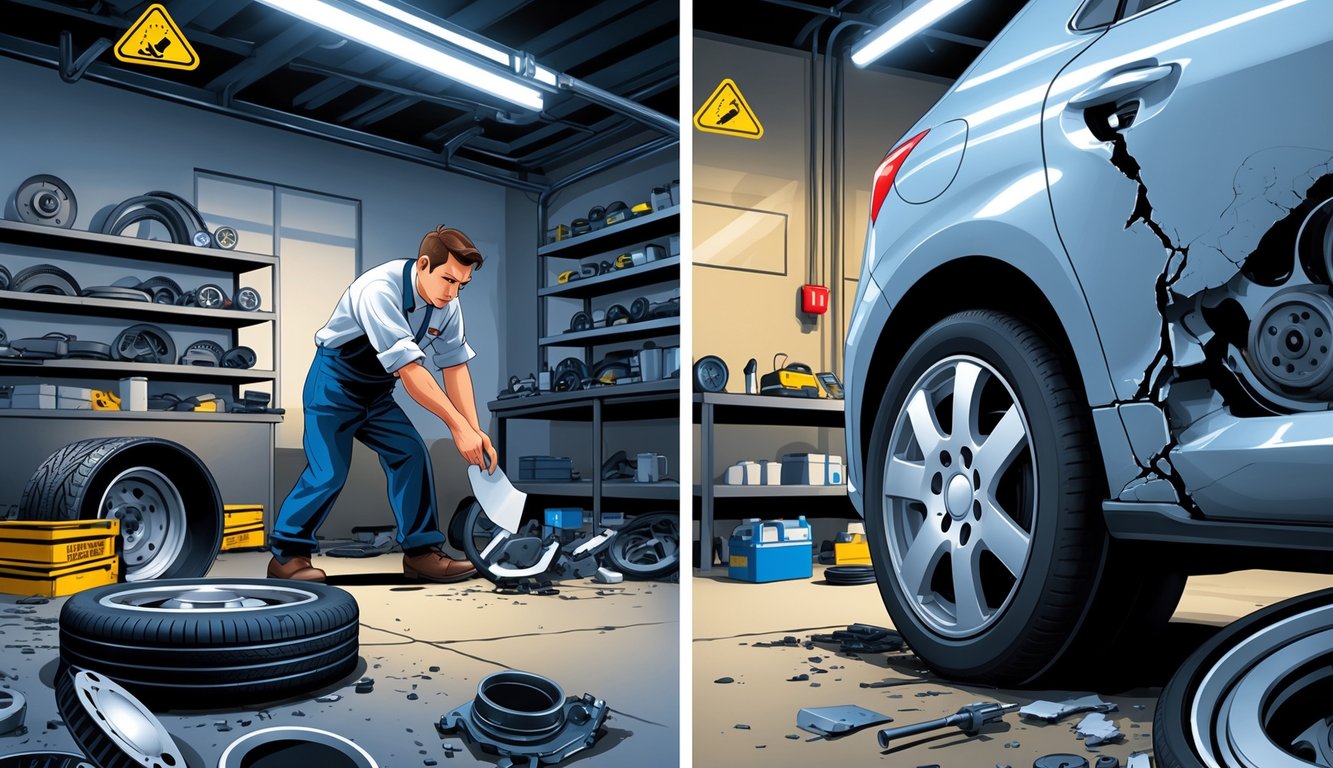
Types Of Cheap Replacement Parts That Jeopardize Safety
What really drives me nuts? Watching someone dig through a bin of lookalike brake pads or tie rods, knowing “budget-friendly” parts will just bite them later. Some parts just fail, but it’s the shortcuts—wrong friction material, thin metal—that make me triple-check my own work.
Aftermarket Auto Parts
Maybe I’m picky, but swapping factory brake rotors for those sketchy off-brand ones? My sedan vibrated so bad I thought my teeth would fall out. Not even exaggerating. The risks with cheap aftermarket parts always show up at the worst time: brake fade, weird tire wear, electrical fires from bargain headlights that melt.
A trade magazine once said 65% of non-OEM parts flunked safety specs. I believe it. My friend Tim, dealership lifer, sticks to OEM after seeing five cheap suspension arms snap in a year. Aftermarket looks the same, but the metal’s just garbage. And don’t forget: you can lose your factory warranty over a $20 part. Manufacturer rules aren’t just scare tactics. The fit is off, the creaks are real, and nobody knows where these parts come from. Installed fast, replaced even faster.
Recycled And Junkyard Parts
Junkyards tempt me sometimes—glass, seatbelt buckle, sure. But the moment someone suggests a recycled airbag or suspension part, I just groan. There’s a sticker that literally says “not for reuse.” Not a joke. Rust hides under grime, fatigue cracks in control arms go unseen (unless you x-ray, which—come on, nobody does), and wheel bearings from a dead minivan wind up in someone’s daily driver.
I once went through four junkyard alternators in a row. My neighbor’s used fuel pump quit halfway up an on-ramp. Used doesn’t mean tested. Some audit found 40% of used electrical parts failed a second test, but people just hear “half price!” There’s no way to know what a part’s been through. Where’s the line between thrifty and reckless? I have no clue, especially with steering racks or brake cylinders from a car that got T-boned.
Knock-Off Parts
My inbox is full of “OEM Style!” spam, and I’ve seen calipers with brand names spelled wrong. Knock-off parts, especially from random sites, look fine until you actually use them. Most die in less than a year. Cheap metals warp, bushings crumble, and the packaging’s a joke.
The worst part? Knock-offs fly through basic inspections. Threads strip, plastics crack, sometimes the dust boots have holes straight out of the bag. A Forbes piece even called out crash safety failures from fake body panels and structural parts. “Savings” disappear the second you need real protection. I once installed a “premium” tie rod that twisted like candy under a wrench. Never again.
Safety Risks Posed By Inferior Parts
Honestly, sometimes I stare at my car and wonder if one random cheap bolt is about to send the whole thing sideways. The idea that a five-dollar part could wreck all the safety engineering? Terrifying. You see these bargain fenders that fold up like a soda can, sensors that just… stop caring, or brake pads that vanish before you’ve even paid off the last set.
Structural Integrity And Crashworthiness
I’ve heard people brag about saving fifty bucks on a bumper like it’s a badge of honor, but the car doesn’t care. Fit means nothing if the metal’s flimsy. One time, I watched a body shop muscle an off-brand door onto a sedan—sure, it latched, but I wouldn’t trust it in a crash. You know those crash test videos? They’re basically irrelevant if you swap in panels that crumple wherever they feel like.
And don’t get me started on hardware swaps—why does anyone think a discount bracket is up for the job? I read this government report that basically said, “Yeah, aftermarket parts are weaker, but good luck finding out until you crash.” Out of sight, out of mind, until you’re in the ER. I’ll admit, sometimes I wonder if anyone at the factory even cares what happens after the parts leave the plant. All those welds and metallurgy details—skip ‘em and, well, hope you never meet a guardrail.
Malfunctions And Reliability Issues
All the sensors in the world mean nothing if the part decides to quit on a Tuesday. I had this alternator once—sounded like a dying kettle, gave up halfway up a mountain. Not fun. I guess reliability’s just a rumor with some of these bargain-bin parts. Surveys say cheap brake pads, rotors, spark plugs, whatever, die early. You don’t notice until you’re stuck on the side of the road, phone in hand, cursing your luck.
And then there’s the “just grab whatever fits” approach when shops run out of stock. Here’s a link that’ll make you lose faith in the whole system. Installers sometimes just wing it and hope for the best—wrong part, wrong fit, surprise breakdown. It’s like trusting a knockoff phone charger with your house wiring. What could possibly go wrong?
Impact On Safety Features
I don’t care how many times the dealership brags about “advanced safety tech”—if the sensors came from a clearance bin, good luck. I overheard a crash investigator mutter, “That airbag never stood a chance.” Apparently, the sensor wasn’t even dust-proof. The IIHS did a study in 2018 and found out that even tiny changes in size or sensitivity mess with all the fancy safety systems.
So yeah, maybe your lane departure warning is just guessing. Maybe your auto-brake is napping. The forty-buck sensor nobody double-checked? That’s what decides if your car saves you or just sits there, lights blinking, doing nothing.
